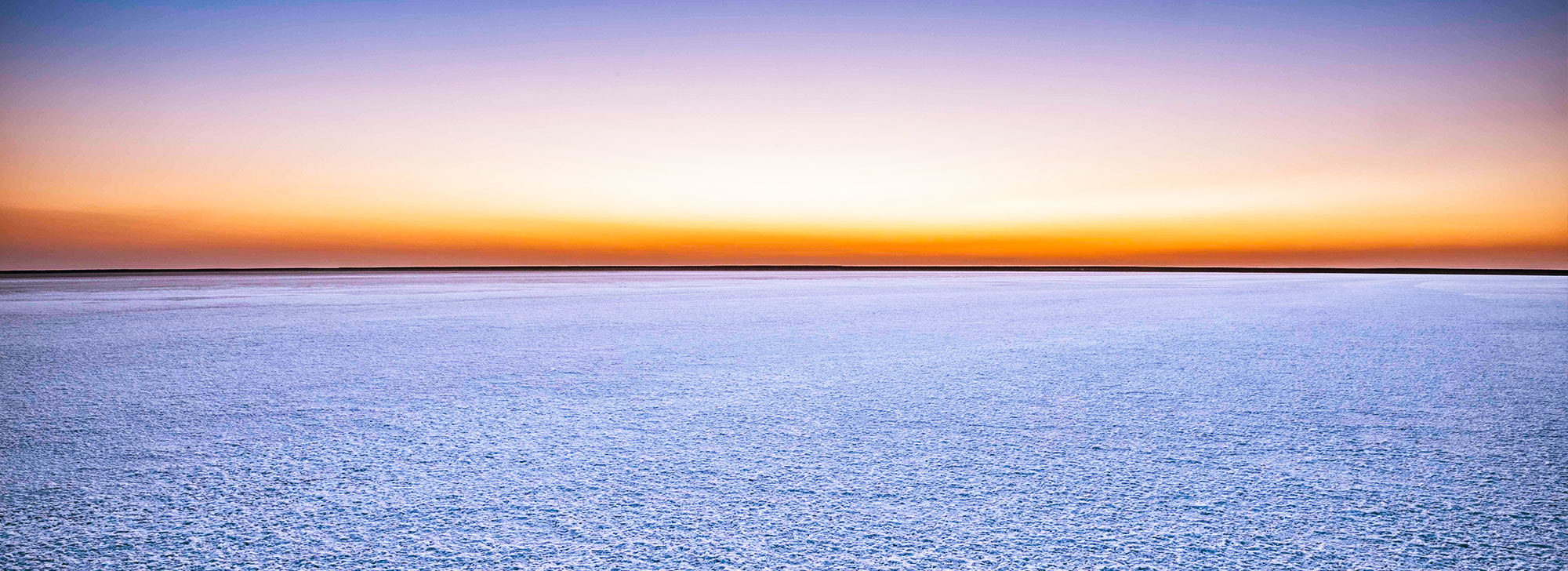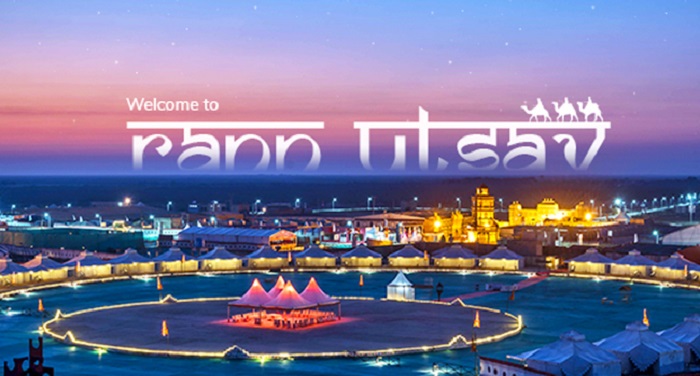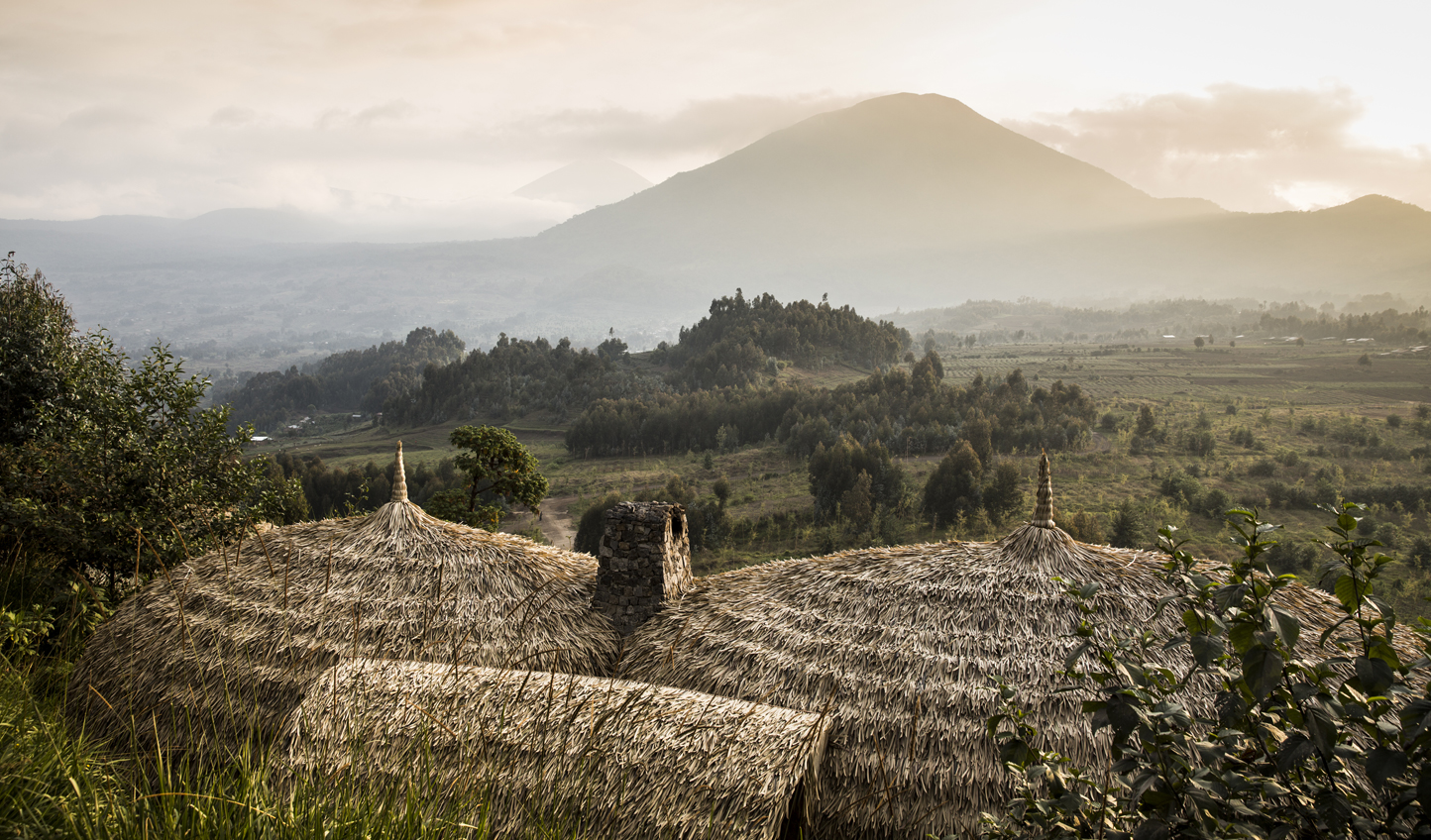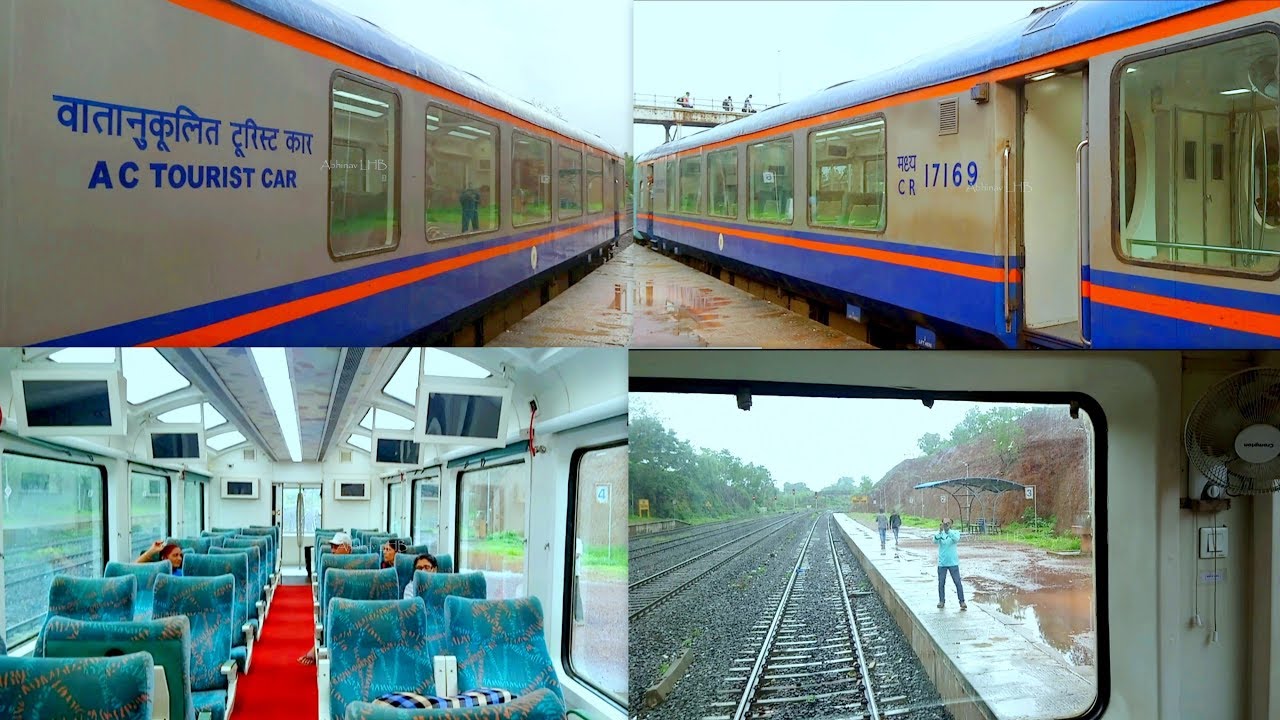The Rann of Kutch, also known as the Great Rann of Kutch (there’s a Little Rann of Kutch as well), is a remarkable place to visit in Gujarat. Much of it consists of one of the world’s largest salt deserts, measuring about 10,000 square kilometers (3,800 square miles). What makes it even more amazing is that the salt desert is underwater during the main monsoon season in India. For the remaining eight months of the year, it’s an enormous stretch of packed white salt. Here’s all the information you need to visit it.
Location
The vast and arid expanse that is the Great Rann of Kutch lies to the north of the Tropic of Cancer (you’ll pass through it and see the sign), at the top of the Kutch district. The northern boundary forms the border between India and Pakistan.
The Great Rann is best approached via Bhuj. Dhordo, approximately an hour and a half north of Bhuj, is being developed by the Gujarat government as the Gateway to the Rann. Dhordo is on the edge of the salt desert.
When to Go to Rann of Kutch
The Rann begins to dry up in October every year, steadily transforming into the desolate and surreal salt desert. The tourist season runs until March. Nearby accommodations close at the end of March and don’t reopen until November. If you want to avoid the crowds and have a more peaceful experience, go towards the end of the tourist season in March. You can still visit the salt desert in April and May though, on a day trip from Bhuj. However, it’s very hot during the day. Plus, there’s an absence of basic facilities for tourists (food, water, and toilets). You’ll pretty much have the salt desert to yourself though!
It’s best to head out into the desert only in the early morning or evening, otherwise, the salt can be blinding. You can take a moonlight camel safari into the desert. The full moon is the most magical time of the month to experience it.
Getting to Rann of Kutch
Resorts in the area will arrange transport for you from Bhuj. There are a couple of ways of getting to Bhuj.
- If taking a train, it’s most convenient from Mumbai (15 hours).
- Bhuj has a domestic airport. Air India flies there non-stop from Mumbai (2 hours).
- Buses to Bhuj are available from many places in and around Gujarat, and the road is in good condition.
If you want to do the Great Rann on a day trip from Bhuj, you can hire a cab or motorbike. Alternatively, small group tour packages are available.
Going on a guided tour takes the hassle out of planning and sightseeing. Kutch Adventures India is based in Bhuj and is involved in rural and responsible tourism in the area. Owner Kuldip will put together a bespoke itinerary for you, including visits to surrounding handicraft villages (which Kutch is renowned for).
:max_bytes(150000):strip_icc():format(webp)/_DSC0244_Snapseed_Darkroom-98daa800e6614bb5a79c9413f49ec18c.jpg)
Permits for Visiting the Rann of Kutch
The Rann of Kutch is a sensitive area, due to its proximity to the Pakistani border. Therefore, a permit is required to visit the salt desert. This can be obtained on the way to the Bhirandiyara village (famous for mawa, a sweet made from milk) checkpoint, about 55 kilometers (34 miles) from Bhuj. The cost is 100 rupees for an adult, 50 rupees for a child aged six to 12 years, 25 rupees for a motorbike, and 50 rupees for a car. You’ll need to submit a photocopy of your ID, plus show the original. Do note that the checkpoint may not open until late morning (around 11 a.m.) and is not open at all during the off-season. Alternatively, Indian citizens can now get permits online here.
You must present the permit to the officers at the army checkpoint at the entry to the salt desert about 45 minutes further on from Bhirandiyara village.
Where to Stay in Rann of Kutch
It’s most convenient to stay in Dhordo or nearby Hodka.
The most popular option is the Gateway to Rann Resort at Dhordo. It’s made up of characterful Kutchi bhungas (mud huts), traditionally crafted and decorated with handicrafts. Rates start from 4,500 rupees for an air-conditioned double, per night.
The Gujarat government has also set up tourist accommodations, the Toran Rann Resort, opposite the army checkpoint near the entrance to the salt desert. This resort is closest to the salt desert, although the location is not particularly scenic. Bhunga accommodations cost 4,500-5,500 rupees per night, plus tax. Breakfast and dinner are included.
Another recommended option is the Shaam-e-Sarhad (Sunset at the Border) Village Resort in Hodka. The resort is owned and managed by the local residents. You can choose to stay in eco-friendly mud tents (3,400 rupees per night for a double, including meals) or traditional bhungas (4,800 rupees per night for a double, including meals). Both have attached bathrooms and running water, although hot water is provided only in buckets. Family cottages are also available. Visits to local artist villages are a highlight.
The Rann Utsav
Gujarat Tourism holds a Rann Ustav festival, which begins at the start of November and extends until the end of February. A tent city with hundreds of luxury tents is set up near the Gateway to Rann Resort at Dhordo for visitors, along with rows of food and handicraft stalls. The package price includes sightseeing trips to surrounding attractions. Activities offered included camel cart rides, ATV rides, paramotoring, rifle shooting, kids’ entertainment zone, spa treatments, and cultural shows. Unfortunately, the festival has become increasingly commercialized in recent years, which has resulted in pollution and garbage in the area. Some people complain that it’s ruined the atmosphere. If this is a concern, ideally plan to visit after the festival is over.
Other Ways to See the Rann of Kutch
If you want to see the Rann of Kutch from a different perspective, Kalo Dungar (Black Hill) offers a panoramic view from 462 meters above sea level. It’s the highest point in Kutch and you can see all the way across to the Pakistani border. Kalo Dungar is accessible via the village of Khavda, which is 25 kilometers (16 miles) away and around 70 kilometers (44 miles) from Bhuj. This village is home to artisans who specialize in block printing, including ajrakh block printing from Pakistan. It’s best to take your own transport as public transport is infrequent. The old Lakhpat Fort (140 kilometers/87 miles from Bhuj) also provides a fabulous view of the Rann of Kutch.
:max_bytes(150000):strip_icc():format(webp)/GettyImages-656310093-cbbce4ea79a7457babd47cb76a4cf01f.jpg)
Frequently asked questions about Rann of Kutch
Q. What is the best time to visit Rann of Kutch?
A – Winters are the best time to visit Kutch. The temperature during these months is between 25 to 12 degrees Celsius and makes the weather perfect for sightseeing. This is also the best time to visit the Rann of Kutch Festival.
Q. What is Rann of Kutch famous for?
A – The Rann of Kachchh is famous for its white salty desert sand and is reputed to be the largest salt desert in the world. ‘Rann‘ means desert in Hindi which in turn is derived from the Sanskrit word ‘Irina’ which also means desert.
Q. Where is the Rann of Kutch?
A – The Rann of Kutch (Gujarati: કચ્છનું રણ) is a large area of salt marshes that span the border between India and Pakistan. It is located mostly in Gujarat (primarily the Kutch district), India, and in some parts of Sindh, Pakistan.
Q. Is Rann of Kutch safe?
A – It is totally safe for girls/girls to visit Rann of Kutch or Kutch or even any remote part of Kutch because kutch has a very very low crime rate and plus people of Kutch are very helpful. If you are stuck anywhere then you can ask them for help and they will be willing to help you.
Q. Is it worth going to Rann of Kutch?
A – If you prefer greater comfort in your choice of accommodation, then the Rann Utsav is definitely the best time to visit the Rann of Kutch! Sightseeing: Rann Utsav packages come with many included and optional sightseeing tours of other interesting places nearby such as Bhuj, Dhordo, Mandavi Beach, and Dholavira, etc.
Q. How many days are enough for Rann of Kutch?
A – 3 days is sufficient for Rann If that’s the only focus. If you are interested in historical places then you need to extend your plan.
Q. Which river disappears in Rann of Kutch?
A – The Luni is the largest river in the Thar Desert of northwest India. It originates in the Pushkar valley of the Aravalli Range, near Ajmer, passes through the southeastern portion of the Thar Desert, and ends in the marshy lands of Rann of Kutch in Gujarat, after traveling a distance of 495 kilometers (308 mi).
Q. What happens in Rann of Kutch festival?
A – October to February – Winters are the best time to visit Kutch. … What happens at the Rann of Kutch festival? It’s a Rann Utsav, the Carnival of Music, Dance & Culture of Gujarat. Enhance the natural beauty of White Rann when the light of Full Moon spread it on the white land.
Q. Why is Rann of Kutch white?
A – Located in the Thar Desert, the White Rann of Kutch is a seasonal salt marsh. During monsoon, the region is covered in water, and overwinter, the water evaporates leaving a salty crust that must be seen to be believed.2
Q. Is Kutch a city?
A – Covering an area of 45,674 km², it is the largest district in India. The population of Kutch is about 2,092,371. It has 10 Talukas, 939 villages, and 6 Municipalities.
Q. How do I plan a trip to Rann of Kutch?
A – There are a lot of attractions to visit and activities to do here so you would easily need 3-4 days to thoroughly enjoy a stay here.
- Visit the Amazing Great Rann of Kutch.
- Explore a Few Attractions in Bhuj.
- Go on a Day Tour of Mandvi.
- Stay in the Tent City or a Nearby Resort.
- Visit the Rann Utsav.
Q. How far is Rann of Kutch from Ahmedabad?
A – The distance between Rann Utsav to Ahmedabad is 326 km, and if you pick the road as a mode of transportation, then the distance is 413.3 km. You can also pick the flight or train as the nearest railway station or airport is Kutch, which is a known city of Bhuj.
Q. Why Luni River is salty?
A – Luni River is a saline river due to its flow through salt-rich surfaces because it absorbs the high salt content of the soil making the river turn salty. When Luni River enters Ajmer, it is called Sabarmati.
Q. Is dholavira worth visiting?
A – Witness this archaeological site and travel to a world of the past that is worth harking back to. Dholavira is also very famous for its water management system which allowed it to proper amidst an arid stretch. … Dholavira has been studied and some interesting facts about the Harappan Civilization have been revealed.
Q. Why is Rann Utsav celebrated?
A – Rann Utsav is one of the most eagerly-awaited tourism events of India, which celebrates the marvels of nature at the White Desert and the rich cultural and artistic heritage of Kutch. The concept of Rann Utsav was envisioned by Hon’ble Prime Minister Shri Narendra Modi, the then Chief Minister of Gujarat.
Q. How can I go to Rann of Kutch from Bhuj?
A – The Rann of Kutch is a sensitive area, due to its proximity to the Pakistani border. Therefore, a permit is required to visit the salt desert. This can be obtained on the way at the Bhirandiyara village (famous for mawa, a sweet made from milk) checkpoint, about 55 kilometers (34 miles) from Bhuj.
Q. When was Rann Utsav started?
A – The history of Rann Utsav was started in the year 2005. It means from 2005 this festival was celebrating. From that day Rann Utsav was organized by the Tourism Department of Gujarat every year with grand celebrations.
Similar Article









